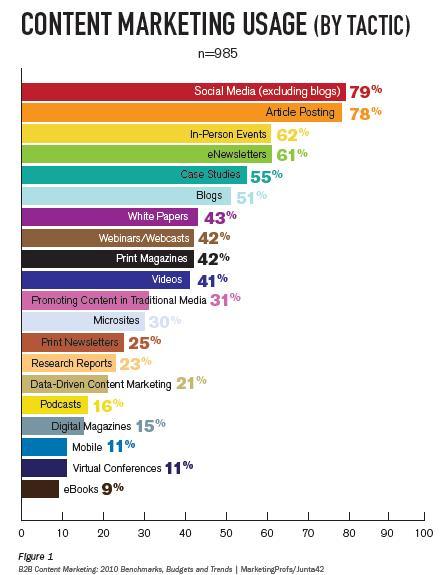It’s hard to believe, but content marketing as a term that describes modern strategies has only been in use for about five years. In that time, the field of content marketing has evolved considerably—and many of the methods that used to work no longer apply.
What is the landscape for the new wave of content marketing? One vital consideration is the sheer volume of content for audiences to choose from. According to data from the Content Marketing Institute, by 2010 the majority of B2B businesses—nine out of 10, or 90 percent—were using some form of content marketing, a number that rose to 93% in 2013. And for B2C business, eMarketer reports that 90 percent used content marketing in 2013, compared to 86 percent in 2012.
With all that noise out there, your company’s content marketing efforts need to stand out. Here’s a look at what is no longer working, and some of the new best practices for content marketing in 2014.
What’s Out: Focusing on Keywords and Company-Centric Content
In the “old” days of content marketing, there was almost a formula for increasing traffic and pushing websites to the top of search engine results. The amount of content mattered, as did the number of keywords in the content and backlinks to the site.
These strategies used to work:
- Content churning: Companies published plenty of content loaded with links and keywords simply because it was what you were “supposed to” do. Often, this content was low on quality and high on search engine bait.
- Keyword stuffing: Not so long ago, the strategy was “the more keywords, the merrier.”
- Black-hat SEO: This was the process of seeding links to a website from as many other sites as possible, with no regard to relevance or quality. The number of backlinks was the only thing that mattered here.
- Tooting the company horn: Early content marketing was often an endless parade of “me, me, me” from businesses that talked about nothing but their own products or services.
There are a few reasons these strategies no longer work. One, search engines—especially Google—are rewarding organic content and penalizing sites that rely on content volume, links, and keywords. And two, consumers’ eyes glaze over at promotional content—they want to be informed, not sold.
Basically, effective content marketing today is all about quality over quantity.
What’s in: Engaging, Informative, and Conversational
Successful companies are writing and publishing content with their audience in mind. This makes both consumers and search engines happy, because quality content is rising to the top of the heap.
Here’s what works in modern content marketing:
- Answering questions: Google’s new Hummingbird algorithm has changed the way the search engine finds results to reflect the way people talk. When consumers search with Google, they aren’t putting in query language like “top restaurants Boston.” They’re asking questions like, “Where can I find a good burger in Boston?” Your content should answer the questions your audience would ask.
- Adding value: No one wants to feel like they’re being marketed to. But if you can give consumers something they want—whether it’s information, entertainment, or education—they’ll view your business in a more favorable light, and be more likely to choose your products or services the next time they need them.
- Getting social: Social media is an undeniable ingredient for successful content marketing. Once you get people excited about your content, they need to be able to share it quickly and conveniently with others. With a thriving social network, you also have the ability to reach more consumers, faster.
What are your content marketing plans for 2014?
Image courtesy of marketingprofs.com and liftdivision.com










Comments are closed.